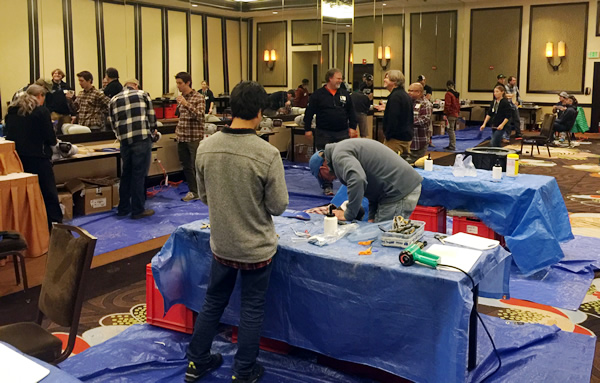The device responsible for making skiing an accessible sport instead of a risky form of recreation is the alpine boot. If it isn’t set up to function properly, the expensive slat it’s meant to control and the binding to which it’s connected won’t operate as their designers intended.
Achieving optimal functionality of all major equipment components depends first and foremost on how the skier connects to his or her boots. If you’d like to test this theory, step into your bindings in any other form of footwear and imagine yourself going 60mph over boilerplate. The next appropriate image to conjure is of waking up strapped to a gurney and caked in plaster.
One reason skiing fails to retain most people who try it is because we send them off on their maiden voyage in rental boots with limited fit capabilities and usually sized so large that the poor renter has no hope of learning much more than that skiing is incredibly hard and that he or she stinks at it.
And the reason rental boots are fit and sized so poorly is that proper fitting takes time and a bit of training. This runs directly counter to the rental imperative to keep the line moving. The move-it-along mentality leaves no room for personalized fitting.
If you’re wondering why these problems haven’t been solved in the last fifty years or so, it’s because the modern alpine boot is an inflexible cave topped by an ankle constraint known as a cuff. While there are plenty of sins committed in the cave, it’s the cuff that makes a ski boot the single most difficult piece of equipment to match to the human foot.
The cuff is there because without it, steering a long, slippery, sliding device is all but impossible. To be functional, the cuff must chiefly contain and somewhat restrain the ankle and its immediate neighbors, a marvelously complex collection of congruent joints. In terms of difficulty, this is sort of like trying to hold onto an angry alley cat.
The business of bootfitting isn’t made any easier by what we ask the foot to do once inside the boot. The architecture of the foot is flexible on the inside and rigid on the outside. But a flexible arch that is also a flattening arch loses functionality in a hard ski boot, so we try to remove some of the flexibility that was designed in. Essentially we ask the inside of the foot to trade functions with the outside.
I’ll let you ponder for a moment about the probability of happy outcomes in a country mostly populated by pronated (flattening) feet.
If I’m over-simplifying things a bit, it’s because the myriad issues bedeviling feet in boots overwhelm any attempt to summarize them swiftly. Learning how to deal with all the variables a bootfitter must balance takes years of training and practice.
If you’re still reading, it may be because you’d like to find the nearest boot fit savant whom you can trust to do the job right. How can you tell if the shop in which you stand is the right place to be?
There are answers to this timeless question, but before I reveal them, a couple of caveats. First, there are no guarantees in life. Even great bootfitters occasionally goof, albeit rarely. Second, there’s no agency, public or private, that scours the country identifying and certifying the credentials of all the best fitters. But there are ways of improving your odds of finding a great fitter.
One resource is America’s Best Bootfitters, a confederation of specialty shops that co-promotes its members’ expertise. The foundational requirement is attendance at Masterfit University, a roadshow that brings well-credentialed instructors and hands-on training to shops around the world.
There’s more to being a great bootfitter than just possessing a MasterFit certificate, and not all great shops choose to join ABB. Here at Realskiers we vet every shop in our partner network and go the extra step of linking our boot commentaries to shops that carry the referenced models.
There is another, time-honored method for finding great fitters: ask other skiers.
Talented fitters tend to create a passionate following eager to share their discovery. If you are among those fortunate souls who have had their skiing revived by a great fitting experiences, we urge you pass your knowledge on to skiers you meet so that one day every skier might be warm, comfortable and in control.




